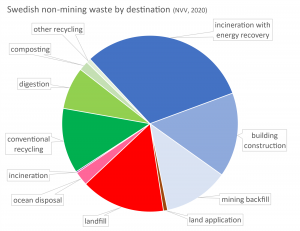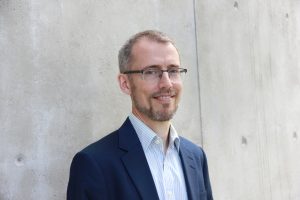Scientific Directions Update #4
News from the Scientific director Greg Peters
Here is the latest Update from the Swedish Life Cycle Center’s Scientific Director. If you would like to draw attention to some progress which researchers your partner organization are making in developing new methods and other developments in the next Scientific Directions Update, please feel free to contact me: gregory.peters at chalmers.se.
Swedish Life Cycle Center Research Strategy
At the Swedish Life Cycle Center Board meeting in May, the written results of a dialogue I ran with representatives of IVL, RISE, SLU, KTH and Chalmers were approved in the form of the Center’s first ever “Research Strategy”. The aim of the document is to strengthen the scientific profile of the Center. Furthermore, explain to researchers the benefits of interacting with the Center, to make it easier for any life cycle researcher in those five partner organizations to get involved, and to guide the Technical Secretariat regarding priorities. So, if you are wondering why you should get involved, or what the Swedish Life Cycle Center can do to support your research, read more at:
Circles of influence
Write about the circularity concept and your chances of having an impact seem extra high today. Here are some recent publications by Swedish Life Cycle Center partners that are already highly cited, despite having been only published (on paper) last year.
Harris, Martin and Diener (IVL, KTH, RISE) wrote a review of the exponentially growing circular economy literature, and were critical of its usually untested assumption that indicators of circularity (e.g. recycling rate) are negatively correlated with indicators of environmental impact (e.g. carbon footprint). Both kinds of indicator should be reported in parallel!
Dokter, Martin and Rahe (all Chalmers) reported on an interview study of architects and industrial designers who identify as pursuing a “circular economy”. They noted how the concept had effects on how these professionals organize work, and also that they focus on different kinds of work and different issues when pursing circularity. So there is a need for folk to establish some common language.
Focusing on the left hand side of the famous MacArthur foundation “butterfly diagram”, Papageorgiou, Azzi, Enell (all KTH) and Sundberg (now SLU) compared traditional contaminated land disposal with biochar-based remediation, and found promising results for the latter, particularly for climate change but also PAH emissions. They see the need for more work on other contaminants of interest in this context.
Finally, here is a figure to inspire you to action: Sweden generated about 36 million tonnes of non-mining waste in 2020. The chart shows what we do with it – there is plenty of room for improvement!



